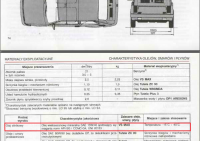MARIUSZ R wrote: He took more mineral, but this is apparently Motul's advantage.
Not only Motula but also, for example, Liqui Moly.
My friend drove on Castrol and added almost half a liter every month after switching to Liqui moly, after two months he did not add anything yet. For over a year I was hammering him to his head that it could be the oil's fault ... Last week he flooded Ceratec and after 3 days he found that after turning off the engine there is silence and earlier he heard the turbo slow down after turning off. And for the experts and doubters, he did not fix the turbo, but it made it easier for him to spin, which will definitely extend his life ;-)
A few years ago I bought a small excavator from a friend, it was almost a miracle to light it, and she smoked and had no power because she had already worked out her own!
Better for me because it was cheap

I treated it with Liqui moly products - rinse, injection cleaning additive 2666, oil plus ceratec and it flies to this day

It does not smoke and lights up nicely ...
When it got hot, the hydraulics lost their power, but the Xado hydraulics ceramizer helped and you can work normally.
Grigori310891 wrote: from how many to how many you have decreased (or increased) your consumption / consumption /
Flood with Motul or Liqui moly and immediately the car will take less oil and flood Ceratec and you will see a significant improvement in engine performance and lower fuel consumption.
Last year I bought a Punto with an engine for overhaul, the oil shone at idle speed, often using poor oil, kills the dragon and you have to clean everything.
I didn't even take the pan off, rinsed the engine, poured out the oil, I sold the car to my neighbor and so far there is no problem with the light.
However, try to buy these products abroad because Poland is unfortunately a códuf country

the packaging will be like the original and inside it is semolina or jelly

milejow wrote: You wanna shit gargle make the engine take less oil

A colleague is right because if there are old seals or worn rings in the engine, the rinse will not help much, but if the reason for taking the oil is because the rings are sealed with sludge, the Liqui Moly rinse will help as much as possible.
Grigori310891 wrote: oil leaks
I have never used chemicals to seal engines because when there is an old sealant, it simply needs to be replaced.



